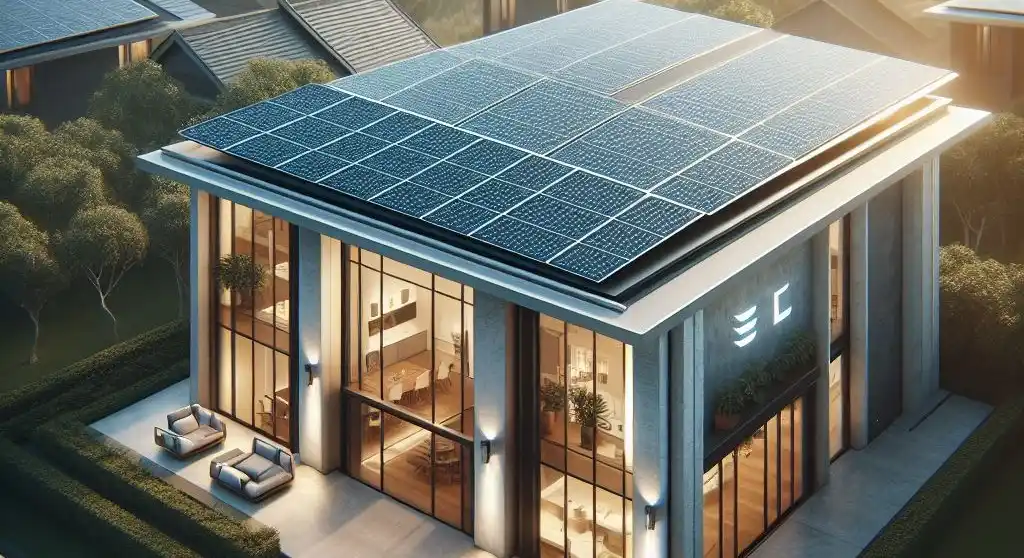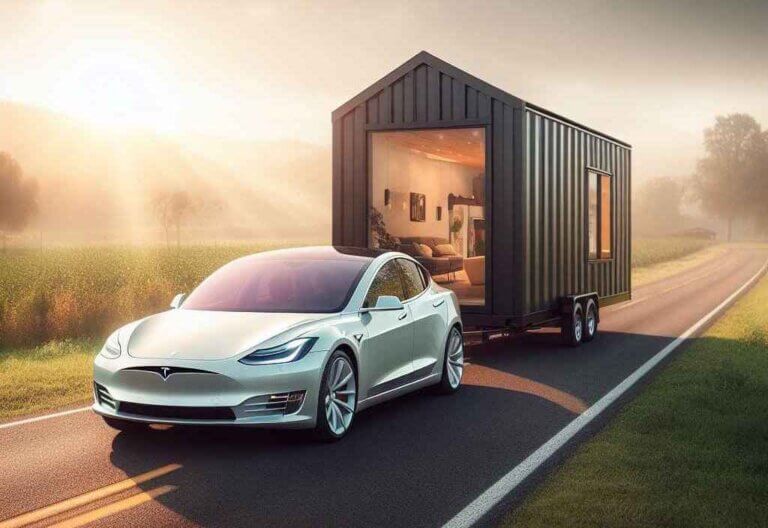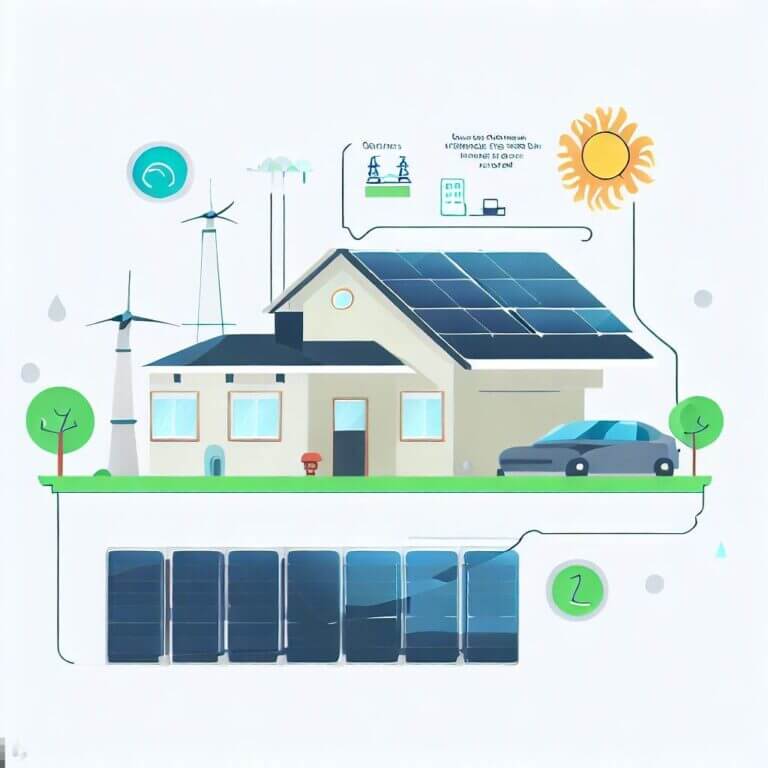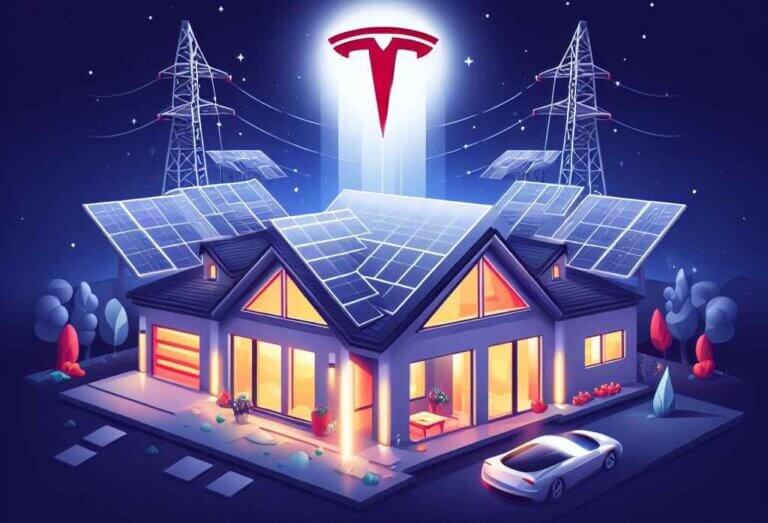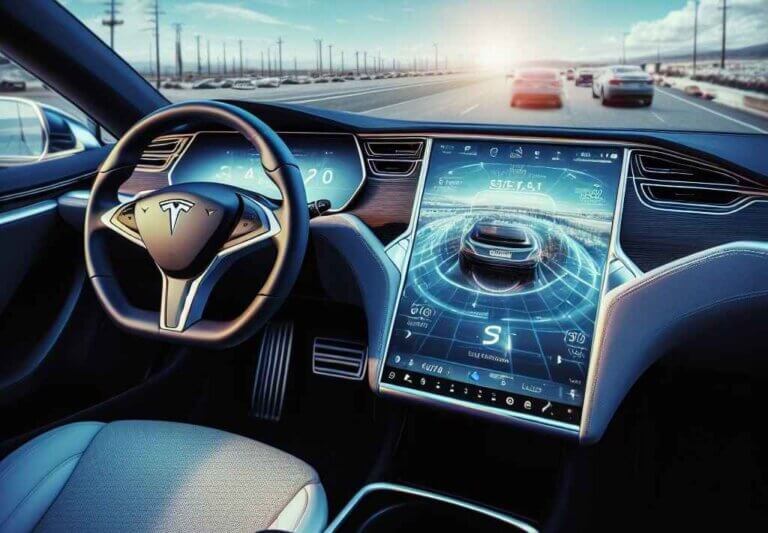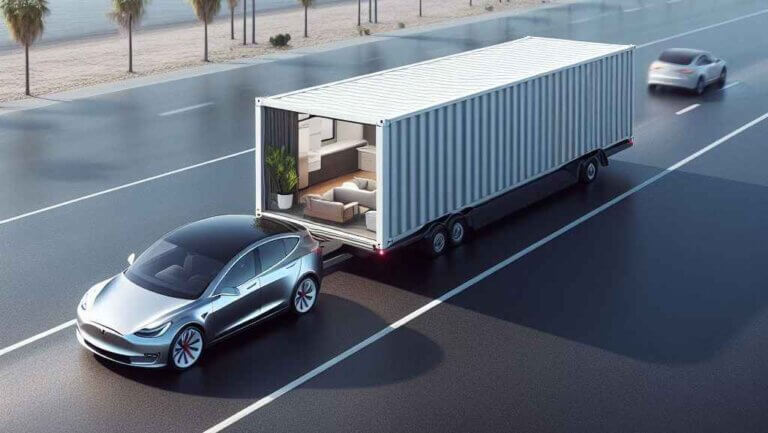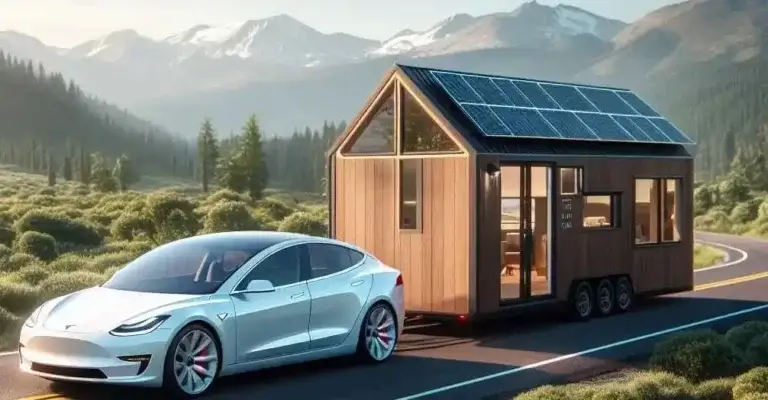Cost to Install Tesla Solar Panels
Are you considering installing Tesla solar panels? With electricity prices constantly rising, solar power is becoming an increasingly popular way for homeowners to save money on energy costs. Tesla solar panels harness the power of the sun to generate electricity for your home. This allows you to reduce your dependence on utility companies by relying on the best solar companies for your energy production.
Installing solar panels on your roof has an upfront cost, but the investment can pay for itself in energy savings over time. In this comprehensive guide, we’ll break down everything you need to know about the Cost to Install Tesla Solar Panels. We’ll cover purchase prices, incentives, installation expenses, long-term savings potential, and more. Let’s dive in!
Table of Contents
Introduction to Tesla Solar Panels
Tesla is one of the biggest names in solar energy, offering high-efficiency solar panels and an integrated battery backup system called Powerwall. Here’s a quick overview before we get into costs:
- Efficient Solar Panels – Tesla solar panels have an efficiency rating of 22.4%, exceeding the industry average of 15-18%. Their monocrystalline solar cells generate more electricity from sunlight.
- Powerwall Battery – The Tesla Powerwall stores solar energy for use when the sun isn’t shining. The Powerwall solar battery provides 24/7 renewable power for your home.
- Sleek Appearance of Tesla Solar Products – With a tempered glass face and slim, low-profile design, Tesla solar panels (as per many Tesla solar panels reviews) look great on any roof.
- Monitoring & Control – The Tesla app lets you see energy usage, track solar production, and customize system settings.
Now let’s break down the purchase and installation costs for Tesla solar panels.
Tesla Solar Panel Equipment Costs
The main factors that determine the price you’ll pay for solar panel equipment from Tesla are:
- Solar panel system size
- Type of panels (solar tiles vs standard panels)
- Number of Tesla powerwall batteries used
Tesla offers solar panels that are comparable in price to other top solar panel manufacturers. However, adding their Powerwall batteries does increase costs over a basic solar panel system.
Here are the Tesla solar equipment costs for a typical 6 kW system:
- Solar panels – $15,400 (based on $2.56 per watt before incentives)
- 1 Powerwall battery – $7,500
- Inverter for powering your home – $2,500
- Total – $25,400, excluding the Tesla powerwall cost
This covers the full home solar and battery system, including the Tesla powerwalls, for powering an average-sized home. Next, let’s look at savings from federal and state incentives.
Solar Incentives and Tax Credits
One major benefit of going solar is taking advantage of financial incentives offered by federal, state, and even local governments. These can reduce your out-of-pocket costs for installing solar panels.
Federal Solar Tax Credit
The current federal solar tax credit is 26% of the total system cost for systems installed in 2022-2023. This can save you thousands of dollars off the price of solar panel equipment and installation.
Based on the $25,400 system cost above, a 26% tax credit from solar companies would save you $6,604. This brings your total out-of-pocket costs down to $18,796. Tax credits directly reduce how much you owe in federal taxes.
State and Local Solar Incentives
Many state governments and some cities and utilities offer additional solar incentives like:
- Renewable Energy Credits (RECs)
- Cash rebates for Tesla products
- Sales tax exemptions
- Property tax exemptions for home solar installations for home solar installations
California, Massachusetts, New Jersey, New York, Connecticut, and Maryland have some of the best state solar incentives. These can save you 25-35% or more on the total costs of installation based on your location.
Check the Database of State Incentives for Renewables and Efficiency (DSIRE) for incentives in your state.
When federal and state solar incentives are combined, you can reduce the cost of a Tesla solar and Powerwall system by 35-40% or more. This drastically cuts both your total price and the timeline to pay back your investment in the solar industry.
Tesla Solar Panel Installation Cost Factors
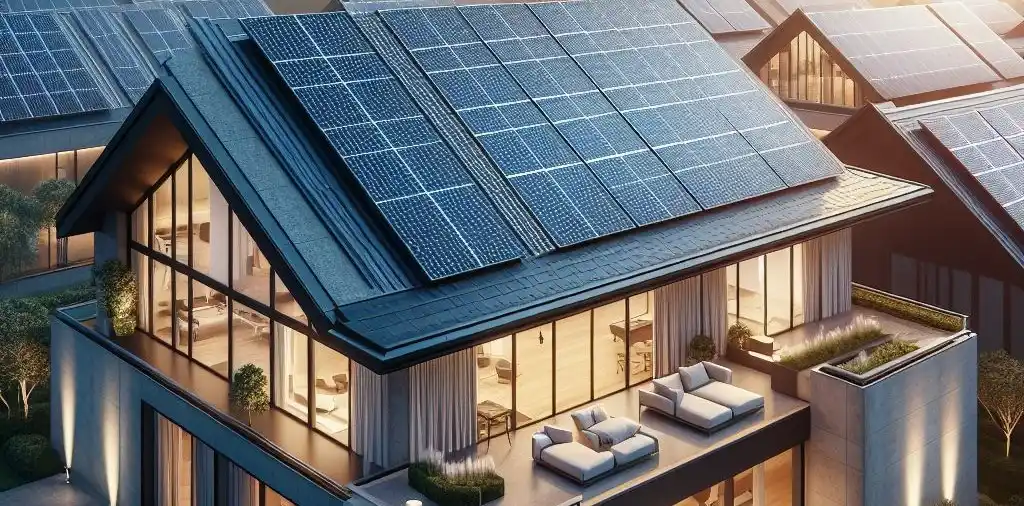
In addition to solar equipment, installing your system also comes at a price from Tesla. Installation costs can vary considerably based on your home’s size, roof type/condition, location, permits, labor costs in your area, and other factors.
Here are the main elements that impact Tesla solar installation pricing:
Size of Solar Panel System
The physical size of your solar array and number of panels needed to meet your energy needs determines labor hours, wiring, racking equipment, and other installation costs. Typical system sizes for the average home are:
- Small/Medium – 4-8kW system
- Large – 10-15kW system for panels installed
- Extra large – 20kW+ system
As a general rule, larger solar installations come at a higher overall price but lower $/watt due to economies of scale.
Roof Type/Condition
Simple roof designs reduce the complexities of installing solar panels. Tesla evaluates rooftop obstructions, connection points, integrity of the structure, and shingles/tiles during a site visit.
Any repairs or upgrades needed to get the roof ready for solar panels may add costs. Older roofs nearing replacement may require full roofing upgrades as part of the project.
Permits & Administrative Fees
Building permits, inspections, utility paperwork, and other bureaucratic processes create expenses for solar installations. What you’ll pay can vary significantly between cities and counties.
Complex municipal paperwork or special zoning restrictions may increase administrative fees. Streamlined solar permitting processes help lower soft costs.
Location/Market Factors
Labor, equipment shipping/logistics, permitting, and overhead costs for Tesla Energy vary across different housing markets. Rural areas often have higher overall installation pricing than major metro regions.
California, Arizona, Colorado, Texas, Florida, and the Northeast have the most mature solar markets with a robust network of Tesla installers. This creates greater pricing efficiency and competition to lower costs for homeowners in these regions. Less developed solar markets are typically pricier.
Add-ons Like Powerwall & Solar Roof
Integrating a Powerwall home battery or solar roof tile installation requires extra wiring, materials, and labor expertise. Both add significantly to the total installation costs over a simpler grid-tied solar panel system.
However, the long-term energy resilience and savings from either Powerwall or solar roof tiles may balance out the higher initial price tag.
Complete Pricing Example
Let’s put it all together with a full cost scenario. We’ll use pricing figures from actual Tesla solar installations:
- 7.5 kW solar panel system
- 13,500 watts (13.5 kW) of solar panels
- 1 Powerwall battery
- Premium solar equipment package
- Straightforward roof for installation
Equipment & Installation Cost
- Solar panels & hardware – $18,900
- 1 Powerwall battery – $7,500
- Gateway/monitoring equipment – $850
- Inverter – $2,500
- Racking, wiring, misc. balance of system – $2,800
- Total Before Incentives The cost of one Powerwall – $32,550
Incentives
- 26% Federal solar tax credit – $8,463
- State cash incentive – $1,500
- Local utility rebate – $1,000
- Total Incentives – $10,963
Final Out-of-Pocket Cost
- System + installation: $32,550
- Total incentives: $-10,963
- Your final cost: $21,587
With incentives, this system ends up around $1.60 per watt – an average rate for premium solar panels, battery backup, and professional installation.
The homeowner saves roughly 1/3 of the total project costs.
Return on Investment Timeframe
“How long does it take to pay off Tesla solar panels?” is a common question. The short answer – with incentives factored in, you can break even within 5-7 years typically.
Let’s use the cost example above to estimate savings and a timeline to recoup your solar investment. We’ll assume:
- Avg monthly energy usage: 900kWh
- Electricity rate: $0.20/kWh (US national average)
- Avg solar production per month: 642 kWh (71% offset)
- Loan interest rate: 3.99% on 20 yr term
Monthly Energy Costs with Tesla products:
- Current electric bill: 900kWh * $0.20 = $180
- Solar loan payment: $152
- Net electricity from the utility: 900kWh – 642kWh = 258kWh
- Ongoing utility bill: 258kWh * $0.20 = $51.60 (with the use of Powerwall solar battery)
Total Monthly Payment: $152 (loan) + $51 (utility bill) = $203
- The old electric bill before installing solar batteries: $180
- New electric bill w/solar: $203
- Monthly savings from solar inverter usage: $177
You save $22/month and achieve full payback on your out-of-pocket costs in under 7 years with these projections. And your lifetime savings from free solar energy will continue for another 25+ years after that.
Savings timeframe declines if electricity rates rise significantly. Higher energy inflation lifts the value of solar.
Lower solar panel equipment and installation pricing also speed up ROI. As market-wide solar costs fall, so will length to break even.
DIY vs Tesla Solar: What’s the Better Option?
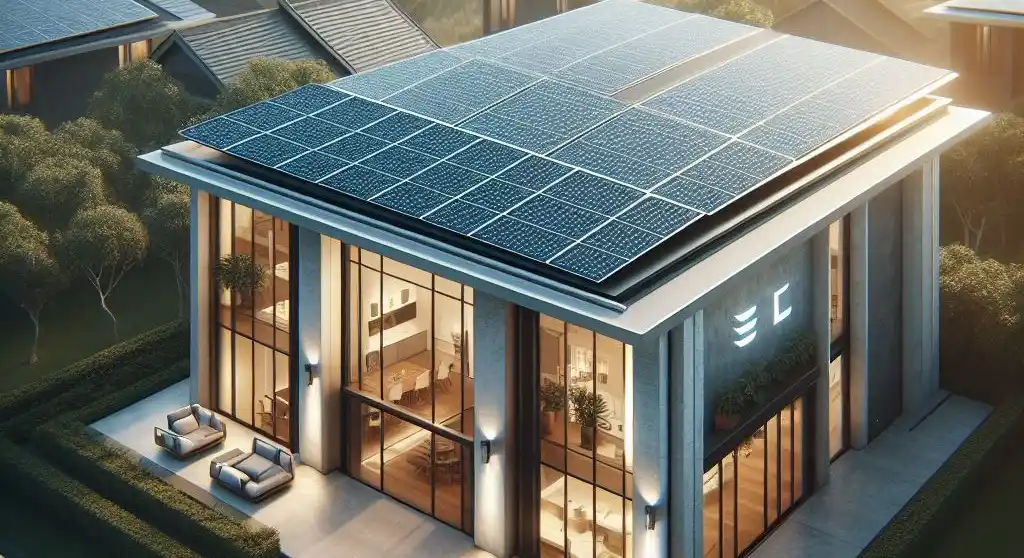
Installing solar panels yourself can theoretically save thousands in labor expenses. But taking on your solar project also comes with risks and hidden costs.
Let’s compare DIY solar vs having Tesla install your system.
DIY Solar Pros
- Lower labor costs
- customize components/design
- Learn hands-on skills
DIY Solar Cons
- Steep learning curve
- Sourcing all materials
- Roofing work
- Permitting/paperwork
- No warranty support
- Potential injury risks
Tesla Solar Pros
- Complete turnkey service
- Professional installers
- Ongoing monitoring/maintenance
- System warranties & performance guarantees
- No equipment/component mismatches
Tesla Solar Cons
- Premium pricing
- Wait times for solar installers
- Less customization freedom
For most homeowners, the advantages of a professionally installed solar system outweigh taking on all the complexities yourself. While tax incentives and lower component costs have improved the economics of DIY solar, installing panels on your roof involves risks if you don’t have electrical, construction, and roofing experience.
Paying a bit more upfront for Tesla to handle the permitting, paperwork, component specs, and performance guarantees saves huge headaches down the road. You get warranty coverage plus monitoring and support from one of America’s top solar brands.
Tesla Solar Roof: A Next-Gen Alternative
Tesla’s integrated solar roof tiles stand out as a uniquely appealing renewable energy option. The company’s solar glass roof provides the same functionality as conventional rooftop panels while integrating directly into your home’s design.
Solar roof tiles have photovoltaic cells and wiring built seamlessly into each tempered glass shingle. This eliminates the bulky appearance of normal solar panels.
Tesla backs its solar roof tiles with a 25-year power generation warranty and a lifetime weatherization warranty:
- 25 years – continuous energy production
- Lifetime – durable for full roof warranty term
A solar roof can provide just as much (or even more in some cases) clean energy as traditional solar panels. The downside of the best solar panels is a price premium over standard panels.
Cost of Tesla Solar Roof
As cutting-edge building-integrated photovoltaics, the Tesla solar roof comes at a higher initial purchase price than conventional solar panels. Cost varies widely based on roof size but averages around $50 per square foot before incentives.
That can put the price of a full roof replacement in the range of $60,000 to $100,000. Exact solar tile pricing is customized during an in-person consultation.
While cheaper than when first released, this remains over twice the price of installing standard solar panels + roof shingles separately. You’ll also generally need to fully replace your current roof to install many solar roof tiles.
Just like normal solar though, federal and state incentives reduce the net costs by 26% or more. Energy savings from the best solar devices add up over decades, offsetting the larger upfront investment.
If the idea of an integrated solar glass roof appeals to you – either for aesthetics, durability or going 100% solar – the extra price may justify itself long term.
Frequently Asked Questions
See answers to some of the most common questions homeowners have about the costs of installing Tesla solar panels below:
How much do Tesla solar panels cost to install?
- Typical costs for a 6kW Tesla solar panel system range from $14,000 to $22,000 before incentives. Adding a Powerwall battery adds roughly $7,500. Many homeowners pay $10,000 to $15,000 out-of-pocket after tax credits & rebates.
What is the monthly payment for Tesla solar panels?
- The estimated monthly loan payment on a $21,500 solar system (after incentives) is around $150/month with 20-year financing at 4% interest. This averages to $0.89/watts. Actual loan rates and terms vary in the solar industry.
How much does a 10kW Tesla solar system cost?
- For a 10kW system, total install costs run $28,000 to $36,000 on average. After the 26% federal tax credit plus other incentives, out-of-pocket drops to around $17,500 to $22,500 for a system this size before financing.
How much does it cost per watt to install Tesla solar panels?
- Installed costs per watt for Tesla solar panels, offered by a Tesla-certified installer, fall around $2.75 to $3.25 per watt on average currently. Prices vary across different housing markets. Cost per watt tends to decline for larger solar installations.
Can I install Tesla solar panels myself?
- While technically possible for DIY installs, Tesla does not provide guidance or support for self-installed solar projects. Their comprehensive warranty also requires certified professional installation and maintenance.
Does Tesla purchase solar panels or lease them?
- Tesla only sells their solar panels directly to homeowners – they do not currently offer any panel leasing or PPA financing programs. You can purchase panels outright or through solar loans and PPAs via third-party lenders.
What is the warranty on Tesla solar panels?
- All Tesla solar panel equipment comes with a 25-year power production warranty. This guarantees system output at 85%+ of the original rated wattage for 25 years. Roof penetrations/attachments also have 25-year warranties.
Conclusion – Cost to Install Tesla Solar Panels
Installing a Tesla solar energy system requires a meaningful upfront investment into your home and future. But federal tax credits and state solar incentives make this investment in solar products more affordable by reducing your total costs by 25-35% off the bat.
With the use of one Tesla Powerwall battery, the decades of free solar electricity produced can provide exceptional long-term savings – unlocking a valuable asset to offset rising energy costs when it comes to solar. With higher retail electricity prices, solar panels offer perhaps the lowest “cost per kWh” you’ll access over the system’s 30+ year lifespan.
While putting solar panels on your roof costs money initially, think of it as converting a fixed monthly electric bill into paying down an appreciating energy asset on your property.
Once your solar loan or finance payments end (often 5-10 years), decades of free renewable energy rewards you with noteworthy home energy independence.

